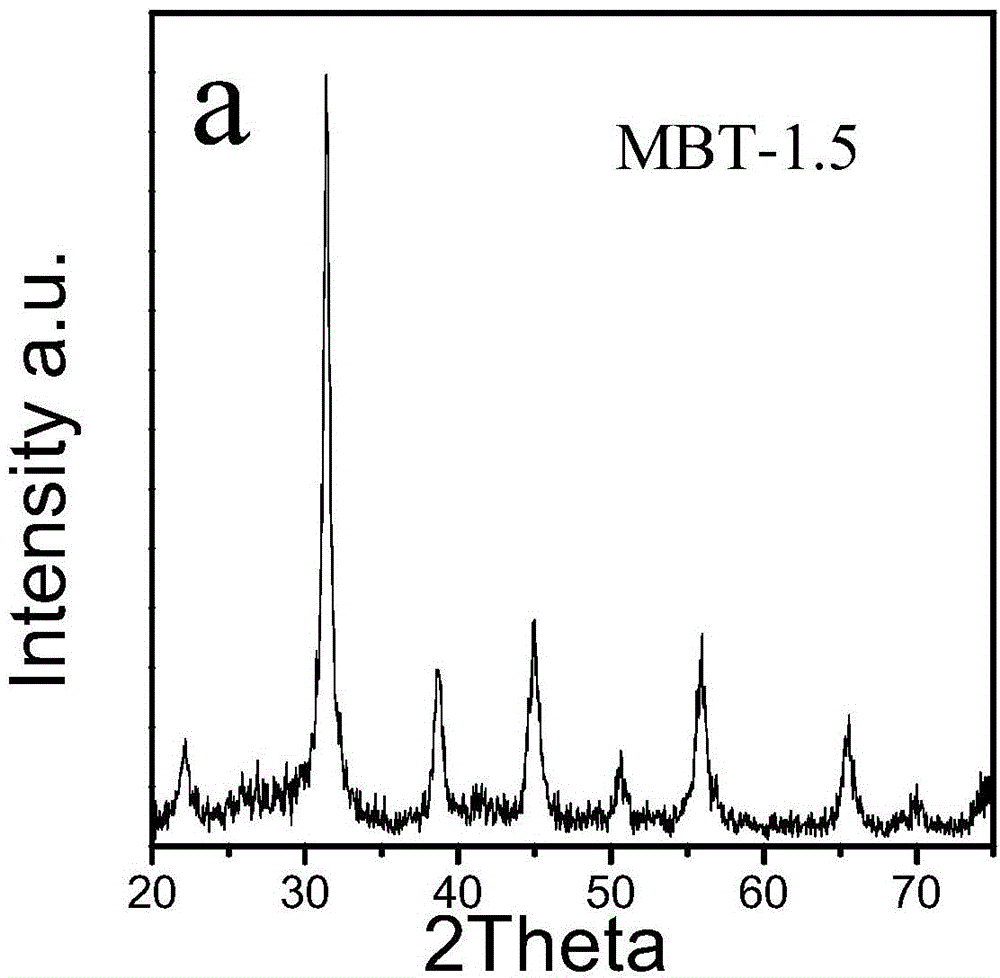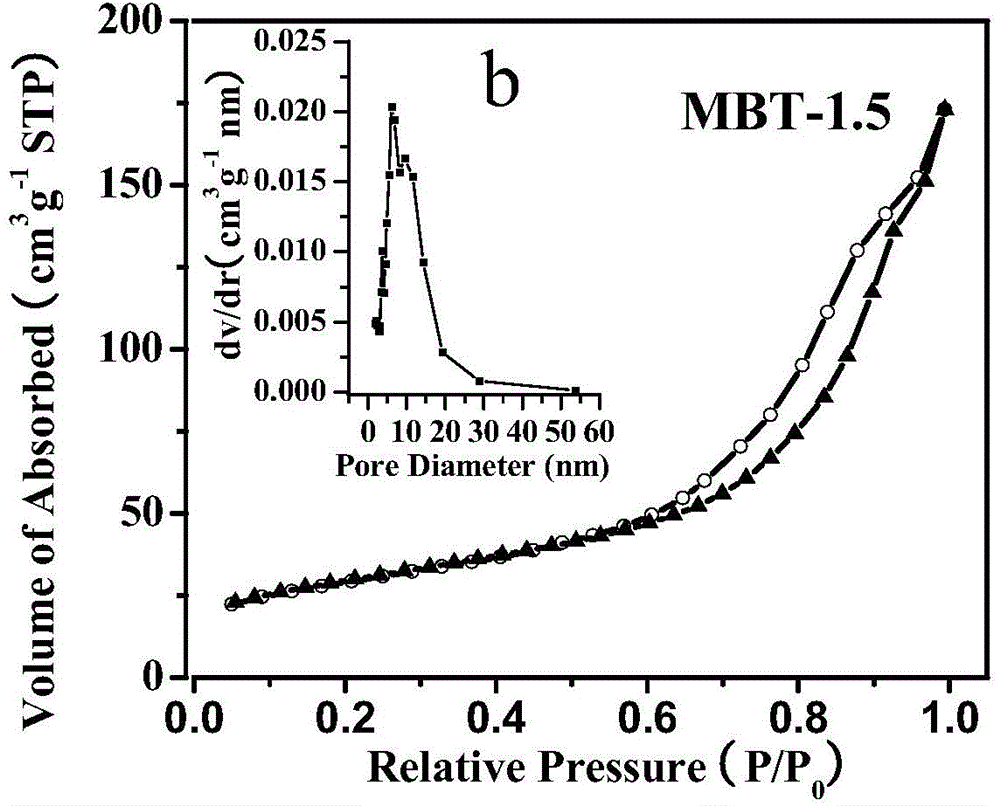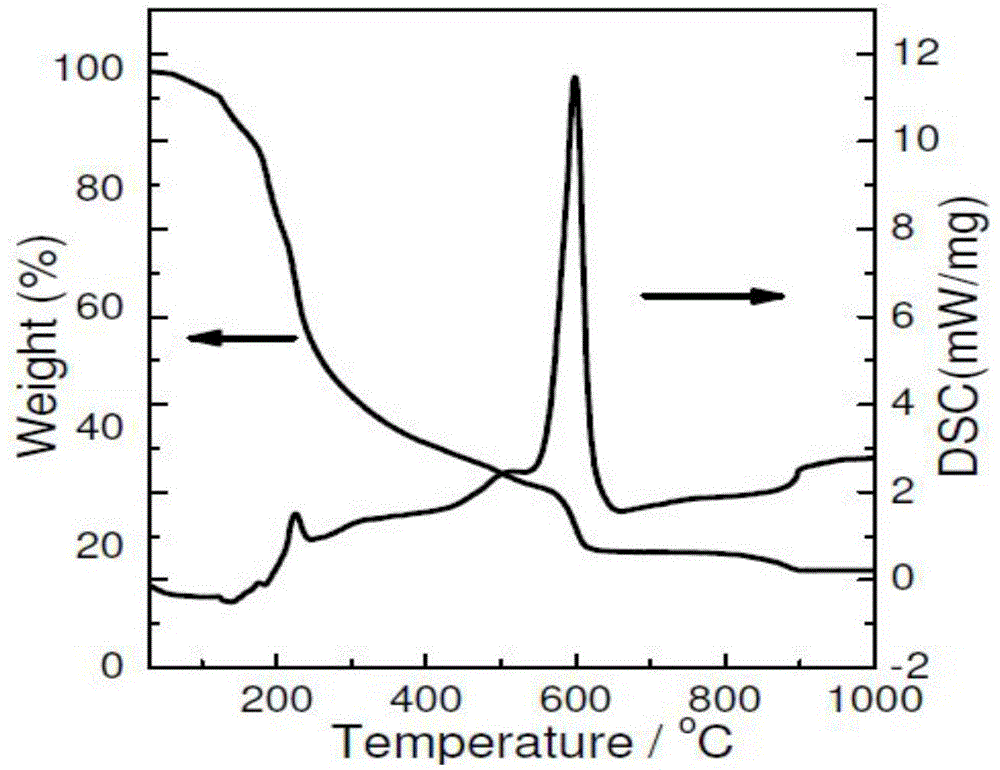Preparation method for mesoporous multi-element metal oxide
A multi-metal and oxide technology, applied in the field of mesoporous materials, can solve the problem of high price of surfactants
- Summary
- Abstract
- Description
- Claims
- Application Information
AI Technical Summary
Problems solved by technology
Method used
Image
Examples
Embodiment 1
[0038] Embodiment 1 A kind of mesoporous multi-element metal oxide BaTiO 3 preparation method
[0039] 1) Dissolve 0.02mol tetrabutyl titanate in ethanol, and dissolve 0.03mol BaCO 3 Dissolve in acetic acid solution, mix the two solutions to get mixed solution E;
[0040] 2) Add surfactant P123 to mixed solution E, stir evenly to obtain solution F;
[0041] 3) Evaporate solution F to dryness in an oven at 40°C for 24 hours to obtain a solid mixture;
[0042] 4) roasting the solid mixture at a temperature of 550° C. for 3 hours;
[0043] 5) The roasted samples were treated with HNO 3 Treatment to remove excess BaCO 3 , to obtain the target product mesoporous multi-metal oxide BaTiO3 , named MBT-1.5.
[0044] MBT-1.5 was tested by X-ray diffraction and nitrogen absorption and desorption, the results are as follows figure 1 and 2 as shown, figure 1 The diffraction peaks in all correspond to BaTiO 3 The characteristic diffraction peaks (JCPDS No.75-0213) are determined b...
Embodiment 2
[0045] Embodiment 2 A kind of mesoporous multi-element metal oxide SrTiO 3 preparation method
[0046] 1) 0.02mol tetrabutyl titanate was dissolved in ethanol, 0.04mol SrCO 3 Dissolve in acetic acid solution, mix the two solutions to get mixed solution E;
[0047] 2) Add 0.03 mol of citric acid as a surfactant into the mixed solution E, and stir evenly to obtain solution F;
[0048] 3) Evaporate solution F to dryness in an oven at 40°C for 24 hours to obtain a solid mixture;
[0049] 4) roasting the solid mixture at a temperature of 550° C. for 3 hours;
[0050] 5) The roasted samples were treated with HNO 3 Treatment to remove excess SrCO 3 , to obtain the target product mesoporous multi-metal oxide SrTiO 3 , named MST-2.
[0051] Carry out TG-DTA test to step 4) in solid mixture, result is as follows image 3 Shown is the weight loss and differential heat change of the sample during the heating and roasting process of the solid mixture in step 4), by image 3 It can...
Embodiment 3
[0055] Embodiment 3 A kind of mesoporous multi-element metal oxide SrTiO 3 preparation method
[0056] Method is the same as embodiment 2, just in step 1 with 0.02mol SrCO 3 Soluble in acetic acid solution.
[0057] Obtain the target product mesoporous multi-metal oxide SrTiO 3 , named MST-1.
[0058] The MST-1 was tested by nitrogen absorption and desorption, the results are as follows Figure 8 As shown in the figure, the adsorption and desorption curves of nitrogen in the figure do not overlap and there is a hysteresis loop, indicating that the synthesized MST-1 has a mesoporous structure, and the specific surface area of MST-1 is 46m 2 / g, far less than the MST-2 prepared in Example 2.
PUM
| Property | Measurement | Unit |
|---|---|---|
| Specific surface area | aaaaa | aaaaa |
| Specific surface area | aaaaa | aaaaa |
| Specific surface area | aaaaa | aaaaa |
Abstract
Description
Claims
Application Information
 Login to View More
Login to View More - R&D
- Intellectual Property
- Life Sciences
- Materials
- Tech Scout
- Unparalleled Data Quality
- Higher Quality Content
- 60% Fewer Hallucinations
Browse by: Latest US Patents, China's latest patents, Technical Efficacy Thesaurus, Application Domain, Technology Topic, Popular Technical Reports.
© 2025 PatSnap. All rights reserved.Legal|Privacy policy|Modern Slavery Act Transparency Statement|Sitemap|About US| Contact US: help@patsnap.com



